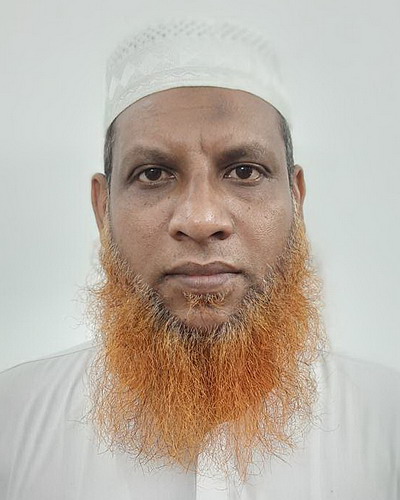Upcoming activities:
23rd SCAC: Fourth Industrial Revolution and Future Society (26-28, Oct'24)
Recent activities
On-Spot Project Review (BAS-USDA 6th Phase)- Jun'24

Fellow CV
List of Publications
(Fellow, 2024)
Prof. Dr. Md. Shahjahan, son of Md. Eunus Ali Mandal and Mst. Latifa Khaun was born in 16 August 1975 in Jamalpur district, Bangladesh. He earned BSc Fisheries (Hons.) in June, 1999 and MS in Fisheries Management in December, 2000 from Bangladesh Agricultural University (BAU) with first class first position. He joined SFM Fisheries College as a Lecturer in January 2001, later appointed as a Lecturer in the Department of Fisheries Management, BAU in May 2004 and presently working as a Professor there. He obtained PhD degree under Monbukagakusho scholarship from Kyushu University, Japan in 2010. Dr. Shahjahan completed his postdoctoral research in Niigata University funded by the JSPS of Japanese government. He completed another post-doctoral study at the Monash University Sunway Campus with an award by the Australian government for a year during 2012. He set up Fish Ecophysiology Laboratory in 2017 at BAU. To date, 9 PhD and more than 75 MS students completed their degree under his supervision. Currently he is supervising 6 more PhD students and 10 MS students in the field of fish ecophysiology.
Prof. Shahjahan has been researching on various aspects of the impacts of environmental (temperature, light, salinity etc.) and anthropogenic (pesticides, heavy metals etc.) factors on fish physiology, especially growth and reproduction. In the laboratory, he uses the physiological parameters of blood as biomarkers and a number of molecular techniques like real time PCR. His research has led to the implementation of policy directives for government and new technology to manage and remediate contamination of fish as well as food. Prof. Shahjahan has earned much reputation as a researcher with the highest degree of scientific accomplishments. He has completed 12 research projects as PI, funded by national and international organizations. Presently he is acting as a PI of 3 research projects.
Prof. Shahjahan’s accomplishments cover many areas of fish endocrinology, physiology, toxicology and Aquaculture. He has now 177 research publications, of which 137 papers have been published in the international journals and the rest 40 papers in the national journals. His research results have been published in the internationally reputed impact factors journals, such as Reviews in Aquaculture (IF: 11.3), Science of the Total Environment (IF: 8.0), Ecotoxicology and Environmental Safety (IF: 6.2), Marine Pollution Bulletin (IF: 5.3), Fish and Shellfish Immunology (IF: 4.1), Aquaculture (IF: 3.9), Aquaculture Reports (IF: 3.2), Journal of Neuroendocrinology (IF: 3.3), Journal of Thermal Biology (IF: 2.9), Fish Physiology and Biochemistry (IF: 2.5) etc. His current total cumulative IF is 351.60. As per Google scholar citation, his current h-index is 43 with 5801 citations. Prof. Shahjahan received UGC Gold Medal Award for 2013 & 2018, BAS Gold Medal Award 2015, best publication awards and a number of other awards for his outstanding research performances. He also included in World top 2% scientist in 2023, 2024 and 2025 published by Elsevier and Stanford University, USA.
He possesses the tools required for solid work and has the intellectual and analytical skills to arrive at effective solutions for complex problems. He established for the first time - Blood biomarkers as diagnostic tools for climate-driven stress responses in fishes (https://doi.org/10.1016/j.scitotenv.2022.156910). Very recently he has developed multi-species probiotics that relieve growth retardation of extreme warm temperature (37°C) in Nile tilapia (https://doi.org/10.1016/j.anifeedsci.2024.116054). He also showed that striped catfish could tolerate up to 10 ppt salinity without any mortality, suitable fish species to introduce in coastal aquaculture (https://doi.org/10.1111/jai.13918). He is evidently a team player and dedicated to collaborations with investigators representing many different areas of food production in aquatic environment.